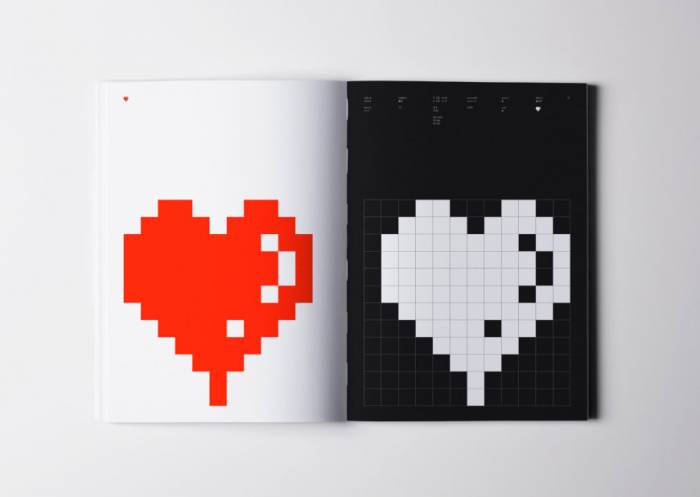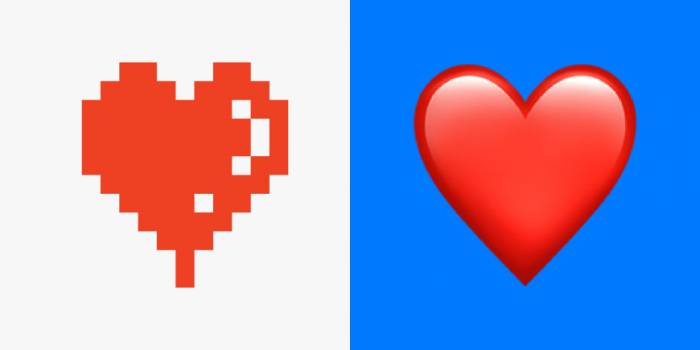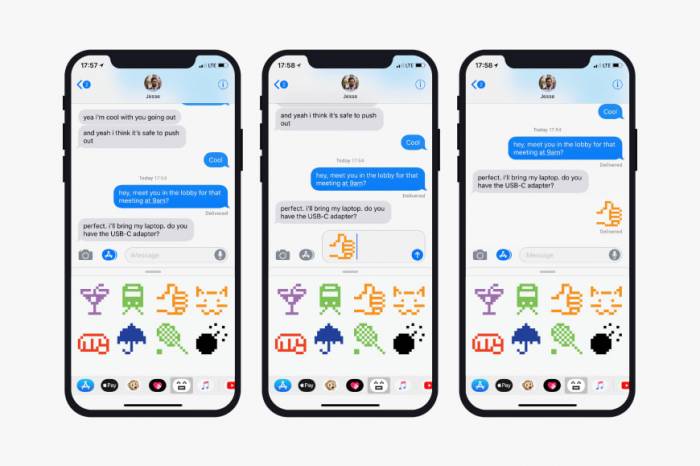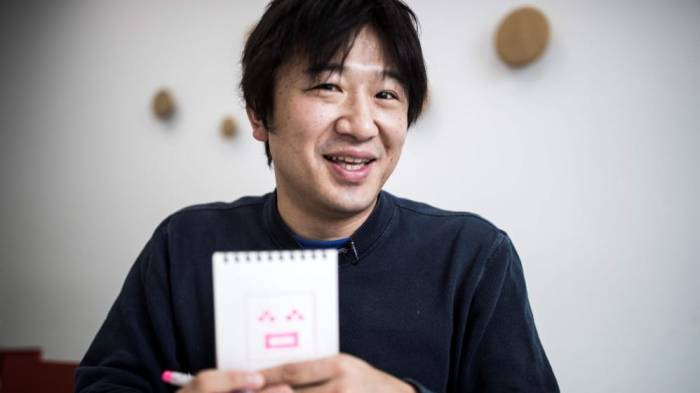That's a total of 144 dots, or 18 bytes of data, meaning that the Japanese designer's complete set of 176 pictograms took up just over 3 kilobytes. A minuscule dose of information, but an enormous amount of meaning.
"From a design perspective, I find them incredible," said Jesse Reed, co-founder of Standards Manual, the publisher behind a forthcoming book on the original emoji set, in an email interview.
 img-responsive'/>
img-responsive'/>
The book is titled simply, "Emoji." Credit: Standards Manual
"If you were given the challenge of translating 176 ideas, including people, places, emotions and concepts into 12-bit symbols, all within 5 weeks time, most designers would faint at the idea."
Pictograms and manga
The word emoji comes from the Japanese 絵 ("e," picture), 文 ("mo," write) and 字 ("ji," character). Japanese characters, or "kanji," are largely based on Chinese ideograms, meaning the language's writing system is already highly pictorial.
"Both emoji and kanji are ideograms, but I did not find inspiration for designing emoji in the kanji," he said in an email interview. "In creating emoji, I found inspiration in pictograms, manga, and all sorts of other sources."
His emoji were created for a very specific purpose: ease of communication on a nascent mobile internet system developed by Japanese telecom giant NTT DoCoMo. The system offered emails, but they were restricted to 250 characters, so emoji were a way to say more in a limited space.
Kurita, who was just 25 years old at the time, had to work within several limitations. But none were greater than the meager 144-pixel resolution, which is why the original emoji look so blocky compared to modern ones.
"I didn't like it, because the number of spaces in the grid was not an odd number, and not being able to find a center made developing the emoji extremely laborious," said Kurita.
Today, emoji are often created with vector graphics, so they can technically scale up to unlimited resolution.

From 176 to 2,789
Emoji remained largely confined to Japan for over a decade. While they were immediately copied by other Japanese telecoms companies, the symbols were not standardized, meaning they could not be used across different networks.
It was not until 2010 that emoji were incorporated into Unicode, the standard that governs the software coding of text. That year, 722 emoji were released on both iPhone and Android.
"In Japan, they were a big hit right away, but the use of emoji overseas really took off starting from 2012, and I was surprised by that gap of time," said Kurita.

One of Kurita's original sketches for the original emoji set. Credit: Standards Manual
Today there are 2,789 emoji in the official Unicode list. They look very different from the pixelated simplicity of Kurita's designs.
"Contemporary emoji aren't really emoji," he said. "Instead, the majority of them are simply pictures, I think. Because it makes inputting them difficult, there might also now be too many. Doesn't there seem to be an increase in the kind of emoji that someone might use only once?"
Nonetheless, Kurita maintains a positive view on emoji's impact: "(They are) used to enhance digital communication, which is centered on the mobile phone. Because human communication does not just take place digitally, I don't really think that emoji can harm it."
The most popular emoji, on Twitter at least, is the so-called "face with tears of joy," which has appeared in over 2 billion tweets since a website called Emojitracker started monitoring them in 2013.
As for Kurita's favorite? "The heart is my number-one favorite emoji, because among the various emoji, (its meaning) is very positive. I do not dislike any of the emoji. Other emoji that I would have liked to have created? The poop emoji, but at the time ... NTT DoCoMo (said) 'no good,' and I wasn't able to create it."
Transformed into abstraction
Standards Manual has carved a niche among design enthusiast by publishing faithfully reproduced classics from graphic design history, such as Massimo Vignelli's MTA guidelines and NASA's graphic design manual from 1974.
"'Emoji' is certainly a departure from our previous titles," said Reed. "It's been a great history to dive into and learn more about. Kurita had to be increasingly decisive with every pixel that was placed, and further to that, his team was making all the calls -- there weren't focus groups or testing to dictate what they produced.
"And then you have to realize the scale in which these were designed. They're only really legible at actual size, which is very small and meant for a phone screen. When you see them scaled up, like in our book, they're transformed into abstraction. This can be good for the quality of crafting artwork, but Kurita had to be constantly assessing what these would look like in their final output -- that alone is a triumphant feat of design engineering."
The book will be released alongside a smartphone keyboard extension of the original emoji set, and is currently the subject of a Kickstarter campaign.

An app will be released along with the book to bring the original emoji to iOS and Android. Credit: Standards Manual
CNN
More about: emoji
















































